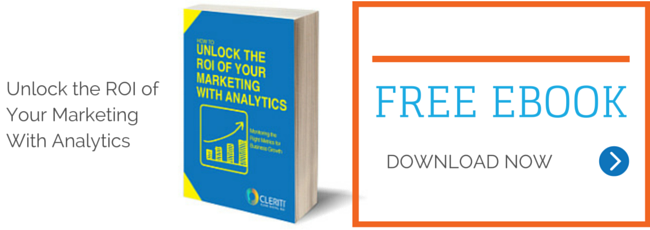- Sep 24, 2014
- By Cleriti Blogger
- In Marketing Strategy and Planning, Website Design and SEO, Content Marketing
Don't Just Google It! The Smart Marketer Talks About Stock Images

 When you're browsing online, what attracts you to a particular article? When you're on Facebook, or Twitter, which posts do you click on and engage with? Are your choices based on content and headline alone, or is there something more? Dollars to donuts, you probably engage more with posts that have attached or embedded images.
When you're browsing online, what attracts you to a particular article? When you're on Facebook, or Twitter, which posts do you click on and engage with? Are your choices based on content and headline alone, or is there something more? Dollars to donuts, you probably engage more with posts that have attached or embedded images.
Visuals. They're in our nature.
Human beings are inherently visual and although many of us may protest to the contrary, we do have naturally short attention spans — especially in a crowded environment. From an evolutionary standpoint, this makes sense.
When our ancestors were foraging in the wild, the most immediate choices they had to make dealt with things they could already see: is this brightly colored fruit tasty, or poisonous? Is that plant moving because of the wind, or because a large cat is about to spring out and eat me for dinner? Visual stimuli serve not only as an aid to memory (when you recall something, you generally remember first how something looked — you "envision" the scene in your head), but also as sorting criteria that help us to prioritize.
You are posting to promote your visibility, right?
It's really easy for text-only content to get lost in the digital shuffle. Think about it. How often, when reading a long document, do you suddenly find yourself losing your place? The eye has a bad habit of skipping ahead. Short text-only posts only take up a line or two of space, so scroll-over is a concern. By contrast, long blocks of text are off-putting to the vast majority of online readers.
And those first few clicks really do matter. Facebook and other social media outlets base much of the feed content a person sees on how much traffic those posts generate. Facebook's algorithm, for example, is based on:
- How well have the creator's past posts performed against all others in the market? Are people in general interested in what the poster is offering?
- Is the potential viewer interested in the type of content in a given post? Does the viewer normally hide or ignore posts on this subject, or does her or she often share them?
- How popular is the post with people who have already seen it in their feeds? Are people scrolling past, clicking "Like" and moving on, commenting on it, or sharing it? Shares have the most weight.
Getting past the last hurdle is where visuals come in. It has been estimated that articles promoted with attached images are engaged by potential readers 94% more often than those without an image. Including an arresting visual or graphic with your post is going to help you grab readers' attention and make initiation of a click-and-share cascade more likely.
So I just Google up a few pics, attach and post, right?
Wrong. Absolutely wrong.
First of all, you're opening yourself up to liability. The creative rights to most of the images you find on Google — even snapshots taken with cell phones — default to the creator, not the poster. That means the photographer, graphic designer, or artist who first made them. If you re-post images you don't own or pay for rights to, you had better hope that the creator doesn't find out and come after you with a decent copyright lawyer, or your backside is in the proverbial sling.
Second, most of the images you find on Google aren't of the correct resolution (dots per pixel, or "DPI") to use in your print or digital marketing. High resolution images — 300 DPI or better — are generally required. Otherwise, increasing an image's area will result in pixelation of the image, and that is sure to turn off your audience.
Third, you want images that augment your text content. It's the old adage, "Show. Don't tell." You really should hire a strong conceptual designer and a competent (experienced) production artist, or outsource to an agency that has them, if you want to make the most impact.
Stock images can be your friend.
Stock images are professionally-produced photographs and graphics that are offered for licensed use via paid stock images services like Getty Images, ShutterStock, Thinkstock and others. If you or your business is a paid subscriber to one of these services, you can download its images and use them without worrying about running afoul of copyright law.
Stock images are produced around an artist's concept of what a business may need to illustrate in an ad Services allow designers to search for appropriate images via keywords and visual specs. A restaurant, for example, may want to produce an ad showing people enjoying a nice dinner at a restaurant. A consultancy may need to show people discussing a sales graph in a conference room. Stock image licensers also typically offer vector art — digital drawings that can be scaled (increased or decreased in size) without pixelation.
Most stock image services allow users to choose subscriptions that offer unlimited download (expensive, but worth it if you are producing a high volume of content), a certain number of downloads per month or year (better for medium-sized companies producing 5,000 or less posts / ads annually), or pay-as-you-go, a la carte downloading.
It may seem like a waste of time, but…
Stock images are an important way you connect with your audience. Make sure you know what you’re doing, and check back here for more advice!





